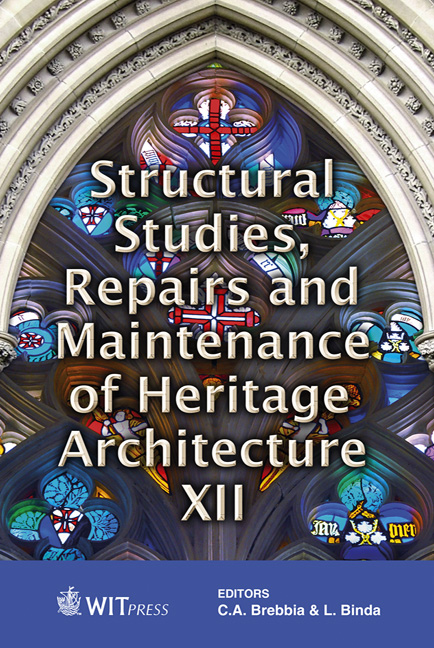The Use Of Optical And Infrared Techniques For The Restoration Of The Frescoes Damaged By Earthquake: A Case Study – The Fresco Of Giacomo Farelli In The Church Of Santa Maria Della Croce Di Roio (L’Aquila, Italy)
Price
Free (open access)
Transaction
Volume
118
Pages
15
Page Range
627 - 641
Published
2011
Size
2,177 kb
Paper DOI
10.2495/STR110521
Copyright
WIT Press
Author(s)
S. Sfarra, C. Ibarra-Castanedo, D. Ambrosini, D. Paoletti, A. Bendada & X. Maldague
Abstract
The 2009 L’Aquila earthquake occurred in the region of Abruzzo, in central Italy. The main shock was rated 6.3 on the moment magnitude scale; its epicentre was near L’Aquila, the capital of Abruzzo. Earthquakes mark the history of L’Aquila, a city built on the bed of an ancient lake: the city was struck in 1315, 1349, 1452, 1501, 1646, 1703, and 1706. Some of its most revered buildings were badly affected by the earthquake. Among them there is the Santa Maria della Croce di Roio Church, built in 1625, expanding a small chapel (1221) dedicated to St. Leonard. The cycle of frescoes by Giacomo Farelli at this Church expresses aspects of Marian devotion of its time. The object of our study is a Farelli’s fresco that represents the discovery of the Statue of Our Lady. The non-destructive testing prior to the earthquake of 2009, made by ESPI technique before and after restoration, and the thermographic testing following the earthquake, clearly identified a weakness of the structure, where the old subsurface cracks and detachments are once again evident. The thermographic image processing allowed us to identify the buried architectural structure. Keywords: ESPI, IRT, fresco, earthquake, restoration.
Keywords
ESPI, IRT, fresco, earthquake, restoration




